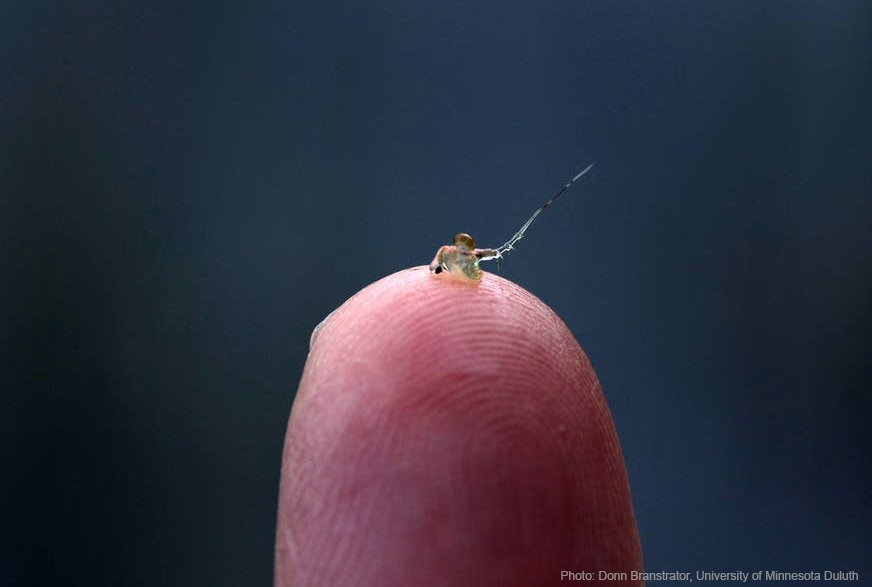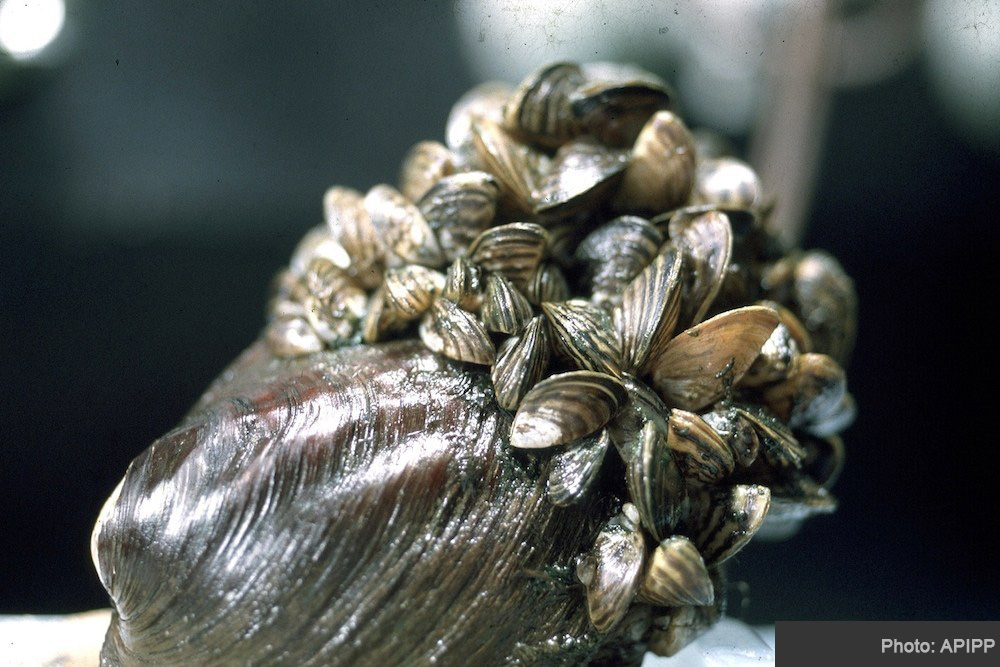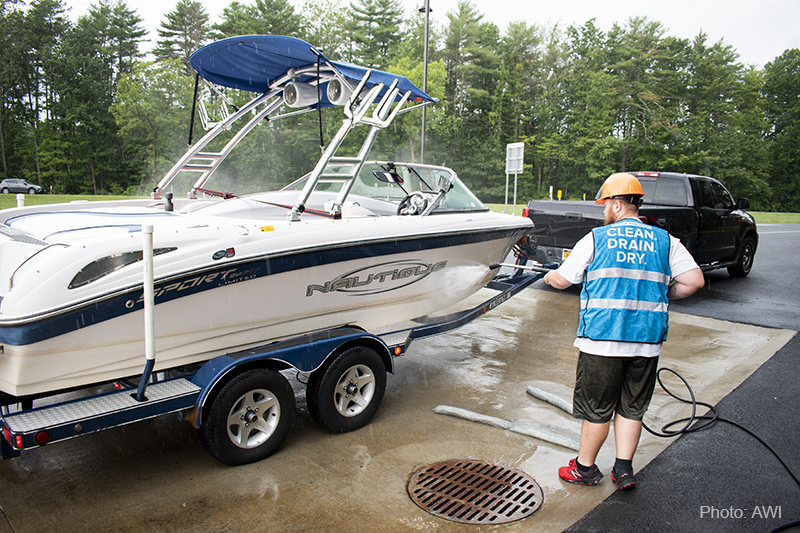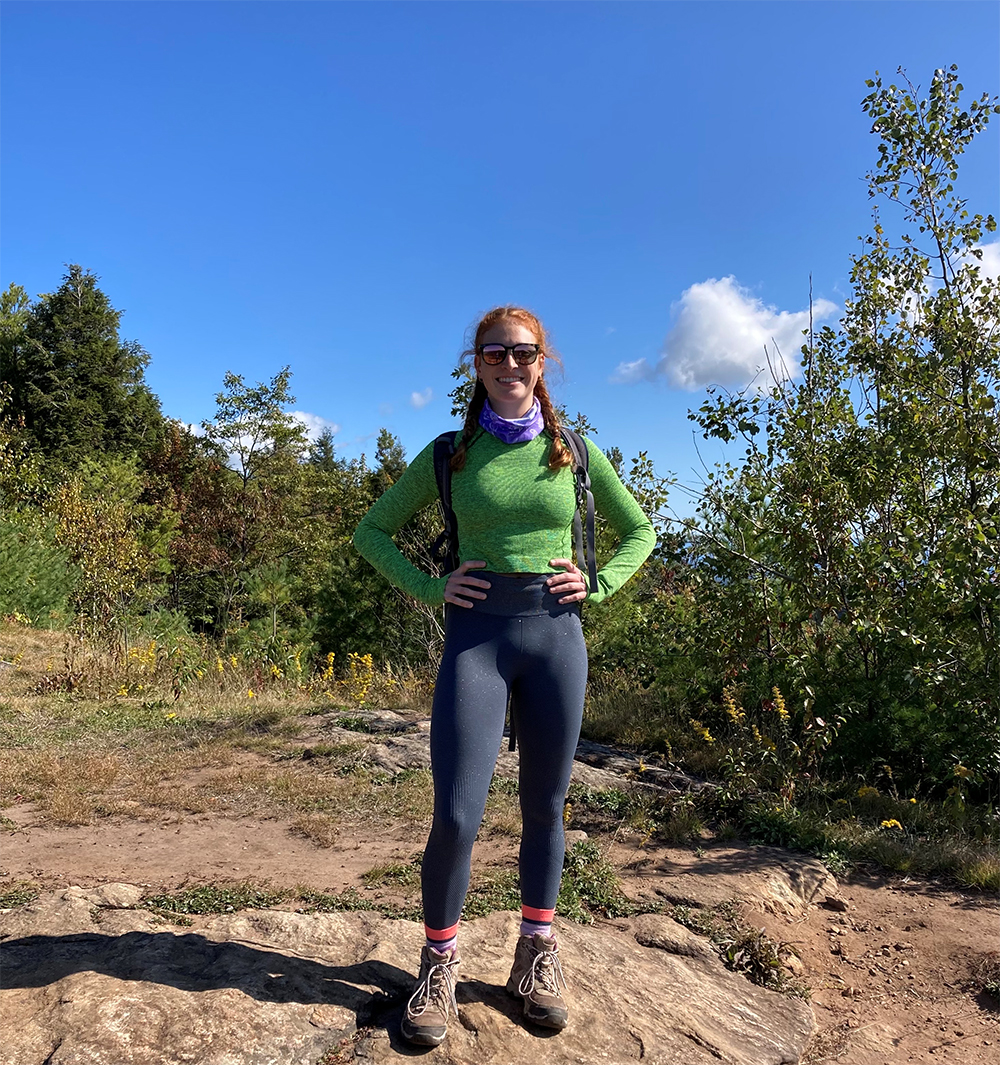By: Allison Stefanelli – Adirondack Council Clarence Petty Legislative Intern
Thursday, April 8, 2021
Invasive species are plants, wildlife, insects, and pathogens that come from another geographic location, and infest, disrupt, and degrade the ecology of native habitats, and cause negative economic impacts.
Aquatic invasive species weaken fisheries, reduce biodiversity, heighten levels of toxins throughout the water and food chain, and outcompete native species, resulting in dramatic overgrowth in many cases. They also cause harm to human health and negatively impact the economies of Adirondack communities that rely on tourism and outdoor recreation. Personal property values and tax revenues for local governments can decrease when aquatic invasive species like Eurasian watermilfoil and hydrilla invade recreational waterbodies. The cumulative impacts of several invasive species in an area can severely degrade natural resources and diminish human enjoyment. The Adirondack Park constitutes roughly one-fifth of New York State’s landmass, with more than 3,000 lakes and ponds and 30,000 miles of rivers and streams. The natural resource dependency of the Adirondack Park economy is enough of a reason to close loopholes in the existing law to better protect the Adirondacks against the spread of aquatic invasive species.

Invasive species are easily spread through connected waterways, and most are unintentionally transported by trailered recreational boats and on fishing gear and equipment. Once introduced, aquatic invasive species take root in new environments very quickly. They typically do not have natural predators, and it’s difficult for human management to eradicate an infestation. Clean-ups are beneficial, but there are rarely 100% effective eradication efforts once an invasive species is established in a waterbody.
Aquatic Invasive Species in the Adirondack Park
Some of the most common aquatic invasive species in Adirondacks are Eurasian watermilfoil, water chestnut, spiny water flea, Asian clams, fishhook water flea, and zebra mussels.
 Eurasion Watermifoil
Eurasion Watermifoil
Eurasian milfoil and water chestnut form thick floating mats that restrict native vegetation from growing and outcompete them for light and space. The presence of these aquatic invasive species creates poor fish habitat and impedes boat traffic, degrading fishing opportunities.
 Spiny Water Flea
Spiny Water Flea
The spiny water flea and fishhook water flea outcompete native zooplankton, alter the structure, function, and composition of waterbodies, and can easily be spread by attaching to fishing equipment.
 Zebra Mussels
Zebra Mussels
Zebra mussels are another invasive species that has had a costly impact on Adirondack waters through producing harmful toxins, reducing native mussel and crayfish populations, and clogging drinking water intakes.
According to the Adirondack Park Invasive Plant Program (APIPP) Annual Report 2020, there are currently 108 lakes in the Adirondacks with aquatic invasive species infestations. However, it is important to note that there are many more ponds, lakes, and creeks in the Park that APIPP does not monitor, so there may be additional invasive infestations beyond those that have been counted.
Sadly, since 2015, 25 new aquatic invasive species infestations have been recorded in Adirondack waters.
What Is Being Done Now?
On the local level
Many local governments and lake associations are trying to prevent the introduction of and manage already established infestations of aquatic invasive species. For example, all of the missions of the East Shore Schroon Lake Association, Schroon Lake Association, and Brant Lake Association incorporate the preservation, protection, and improvement of their waterbodies from contamination, degradation, and invasive species. Along with individual work, partnerships with other county, town, district, and government agencies work together to steward the land and educate the public to protect Adirondack lakes, rivers, and streams. Currently, Eurasian watermilfoil is being managed in 17 lakes, and the water chestnut and zebra mussels are being managed in three and one lake, respectively.
 Boat Wash Station at the Adirondack Welcome Center
Boat Wash Station at the Adirondack Welcome Center
On the state level
The current New York State Aquatic Invasive Species Transport Law asks boaters to “take reasonable precautions” when launching into any water body. Yet research indicates that aquatic invasive species infestations have continued despite of this transport law. Adirondack Council sampling of trailered motorboats traveling into the Adirondacks during high volume holiday weekends found that at least 85% of boats passed by inspection stations without stopping. Clearly, the Park’s free and expansive network of boat inspection and decontamination stations system is being underutilized, demonstrating that a loophole exists in the current statute. The current law’s voluntary program does not guarantee a clean future for waters in the Adirondack Park. More needs to be done.
Underutilization of boat washing stations and the continual spread of aquatic invasive species will not only impact the Park’s natural resources but will also be a significant economic burden on the state. A single clean-up project can cost as much as $400,000 per year and never fully eradicate the invasive of concern.
The Solution? Strengthen the Invasive Species Transport Law for the Adirondacks!
With its existing infrastructure, staffing, and resources, the Adirondack Park has the capacity to manage a strengthened boat inspection law.
The Adirondack Council is advocating for policymakers to strengthen the New York State Aquatic Invasive Species Transport Law by giving the Department of Environmental Conservation the authority to require boat inspections and decontaminations in the Adirondack Park prior to launching in public waters or when passing a staffed functional boat inspection station. This will enhance clean water protections and do a better job of preventing the introduction of any new aquatic invasive species in Adirondack waterbodies.

How You Can Help
Please take action by sending emails to New York State Lawmakers urging them to strengthen the Aquatic Invasive Species Transport Law to close the invasive species loophole for the Adirondacks.
Conclusion
Invasive species cause ecological, economic, and social harm. They lack predators, produce many offspring or seeds, have a generalist diet, and monopolize resources. Without any ecological checks and balances, there comes a tipping point to where invasive species push out native plants and animals, thus decreasing biodiversity that is important to the Adirondack region. Ecological impacts include biodiversity loss from competition, direct disruptions in the food web, and decreased light, oxygen, space, and resources which lead to warmer waters and shifts in fish populations. Reduction in fish productivity directly affects the recreation and tourism markets as well as property value in areas with infestations. It costs millions to offset the economic impacts of aquatic invasive species that decrease drinking water quality, threaten human health from algal blooms, and damage infrastructure.
Please remember to clean, drain, and dry recreational watercrafts because they are a key vector in the spread of aquatic invasive species, as transportation corridors provide opportunities for the movement of these invaders through the landscape. Also, please remember to get involved and ask New York State lawmakers to protect jobs and tourism that depend on clean Adirondack water!

Allison Stefanelli is the Adirondack Council Clarence Petty Legislative Intern working with the Government Relations and Communications teams in Albany, helping to advance the Council’s advocacy programs. Her duties include tracking legislation that pertains to the Adirondack Park and encompasses the Adirondack Council’s mission. Allison grew up in Albany, NY, and spent countless weeks of her childhood hiking mountains in the Park and learning how to fish, canoe, sail, shoot a rifle, build a campfire, and appreciate the great outdoors. Allison studied wildlife and conservation biology at the University of New Hampshire. During this time, she gained experience through a Summer Undergraduate Research Fellowship identifying population abundance and occupancy by trapping small mammals in a captive breeding pen for the endangered New England cottontails.

